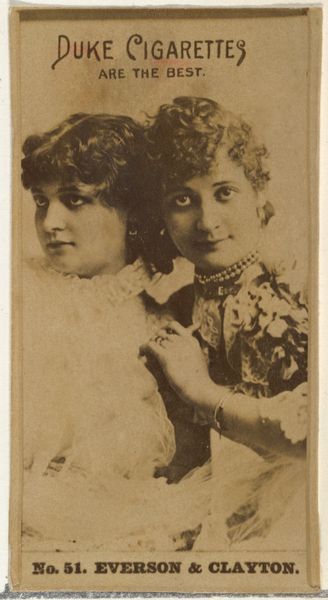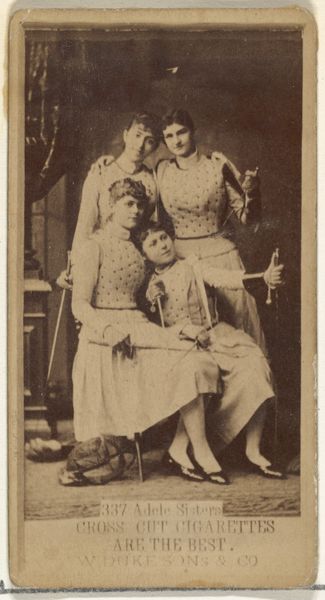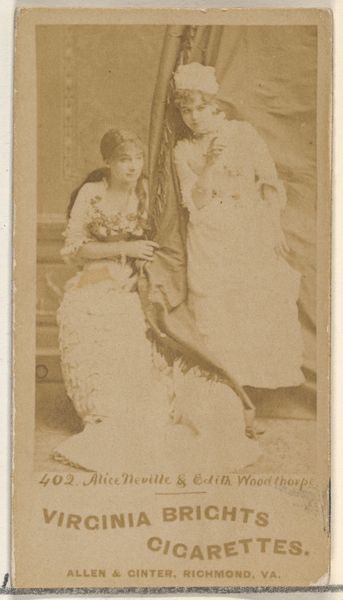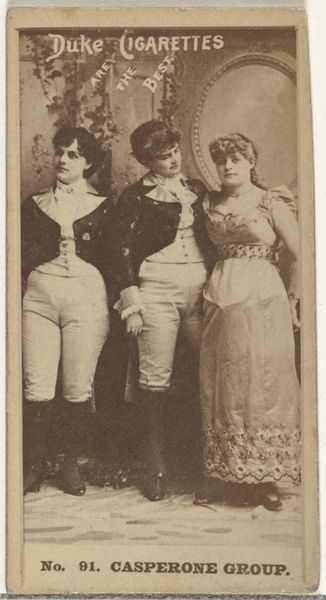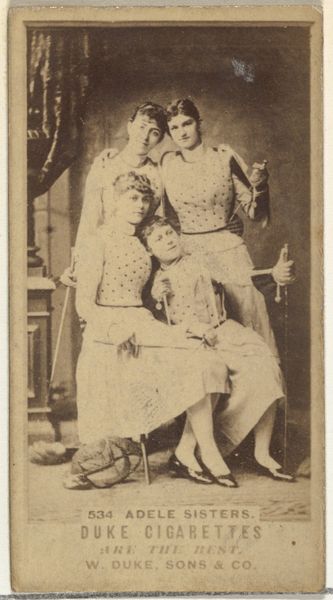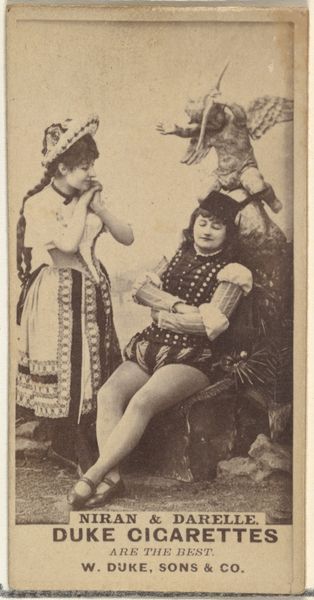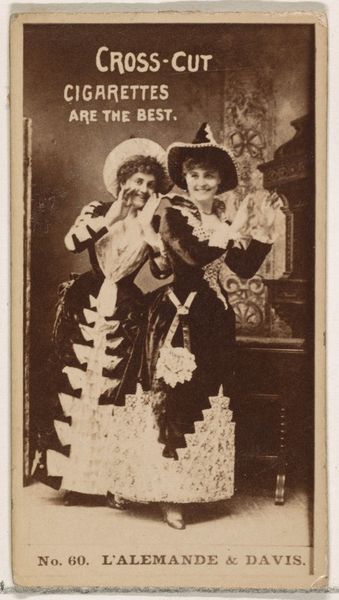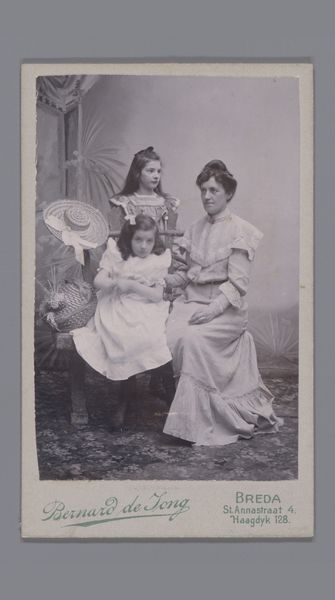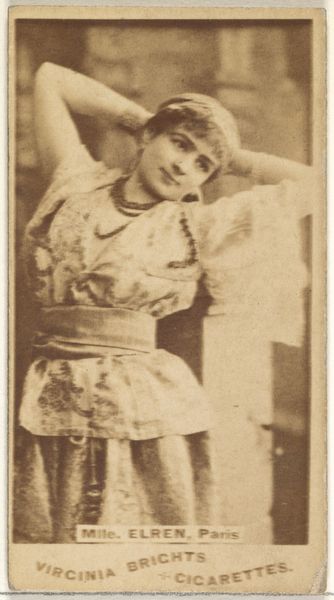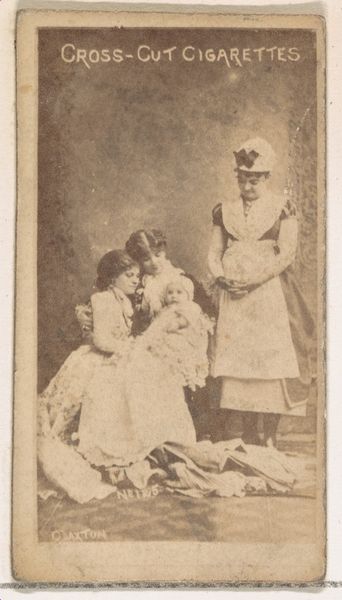
Card Number 169, The Mikado, from the Actors and Actresses series (N145-2) issued by Duke Sons & Co. to promote Cross Cut Cigarettes 1880s
0:00
0:00
print, photography
#
portrait
# print
#
figuration
#
photography
#
japonisme
Dimensions: Sheet: 2 5/8 × 1 7/16 in. (6.6 × 3.7 cm)
Copyright: Public Domain
Curator: Oh my, look at this old photograph. It feels like a faded dream, doesn't it? There’s a strange allure in these sepia tones. Editor: Indeed. This is card number 169 from the Actors and Actresses series, dating back to the 1880s. It was created by W. Duke, Sons & Co. to advertise their Cross Cut Cigarettes. Titled "The Mikado," it depicts three women dressed, or rather costumed, in what appears to be a very Westernized version of Japanese attire. Curator: "The Mikado"! That instantly brings to mind Gilbert and Sullivan, a cultural tidal wave of Japonisme in England… it definitely looks like some fantastical version of Japan filtered through a theatrical lens. They're all holding fans, and their expressions are… intriguing. Like they’re in on a secret. It’s slightly unsettling. Editor: And it's unsettling because of its Orientalist gaze. These images were widely circulated and consumed, constructing a very specific, often inaccurate and romanticized, vision of the "Orient." The attire is clearly staged, and the photograph participates in a larger historical pattern of cultural appropriation and exoticization of Asian cultures. These women, likely white actresses, become symbols within this performance. Curator: You're so right. It does raise all sorts of uncomfortable questions. But looking at the technical side, I do love the texture achieved with this photographic print. The way the light catches the fabrics, despite being so monochrome...there’s depth. Do you think it consciously alludes to Ukiyo-e prints, with its focus on fashionable figures? Editor: I think that is partly its purpose. Japonisme deeply informed visual culture at the time. However, what we need to address is that Ukiyo-e, and Japanese art forms, served merely as aesthetic inspiration within a colonial framework. What gets lost is an actual understanding or respect for the source culture. This is reduced to a marketing ploy, perpetuating power imbalances through these commercial images. Curator: Hmmm, a potent reminder. It’s so easy to be seduced by surface beauty. This small cigarette card really encapsulates a huge, messy tangle of cultural exchange and exploitation. Editor: Precisely. Analyzing this object requires that we hold both appreciation for the visual artifact, while critically examining the embedded historical power dynamics at play.
Comments
No comments
Be the first to comment and join the conversation on the ultimate creative platform.
